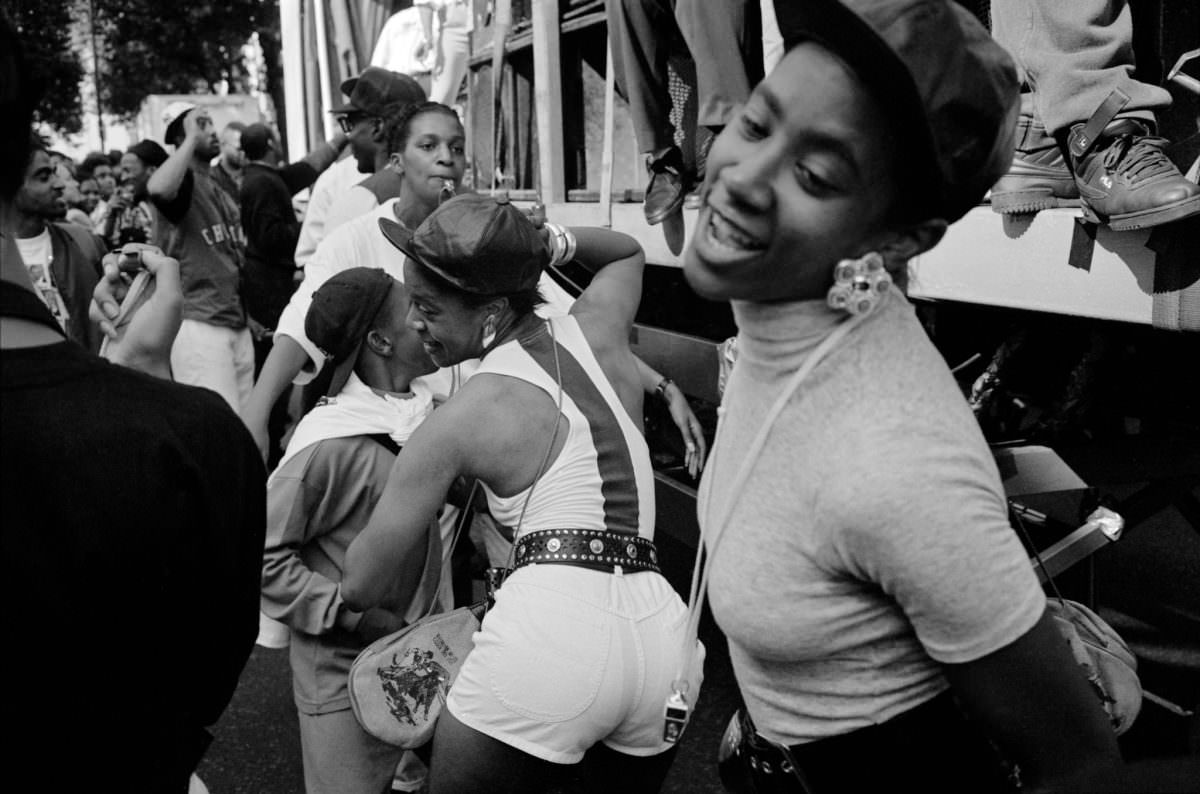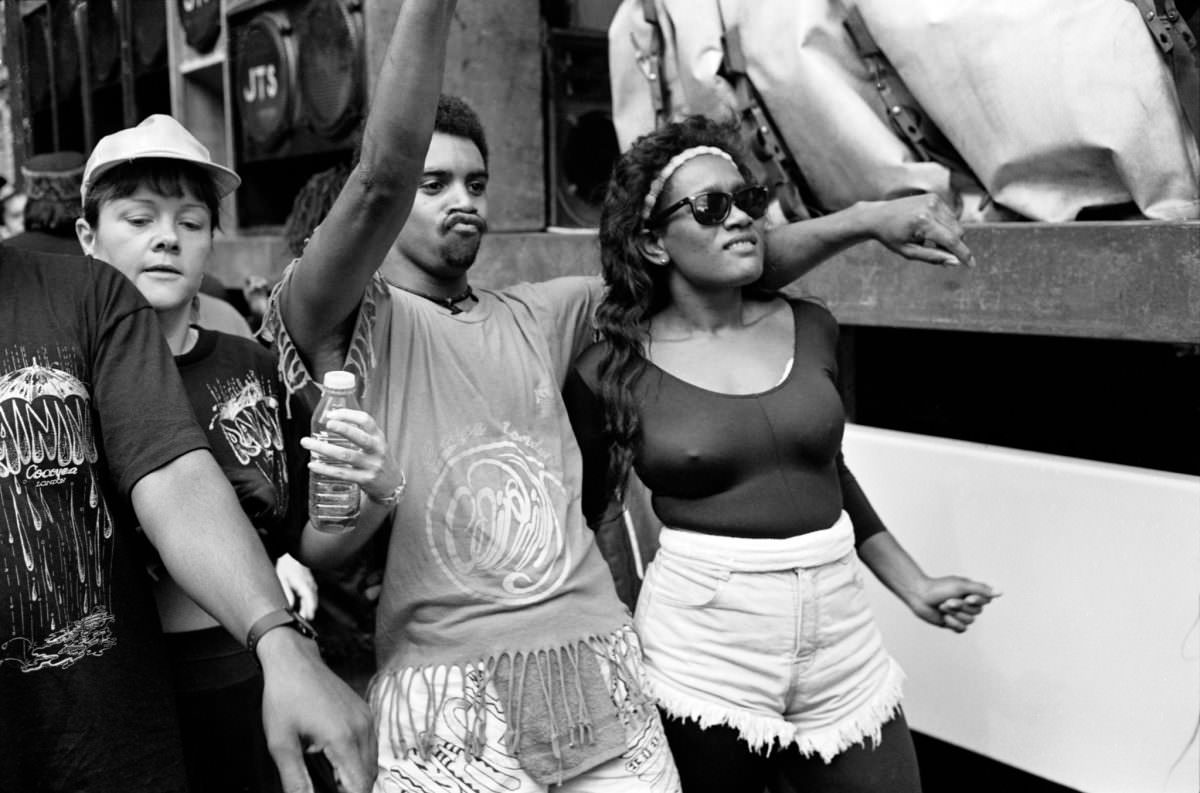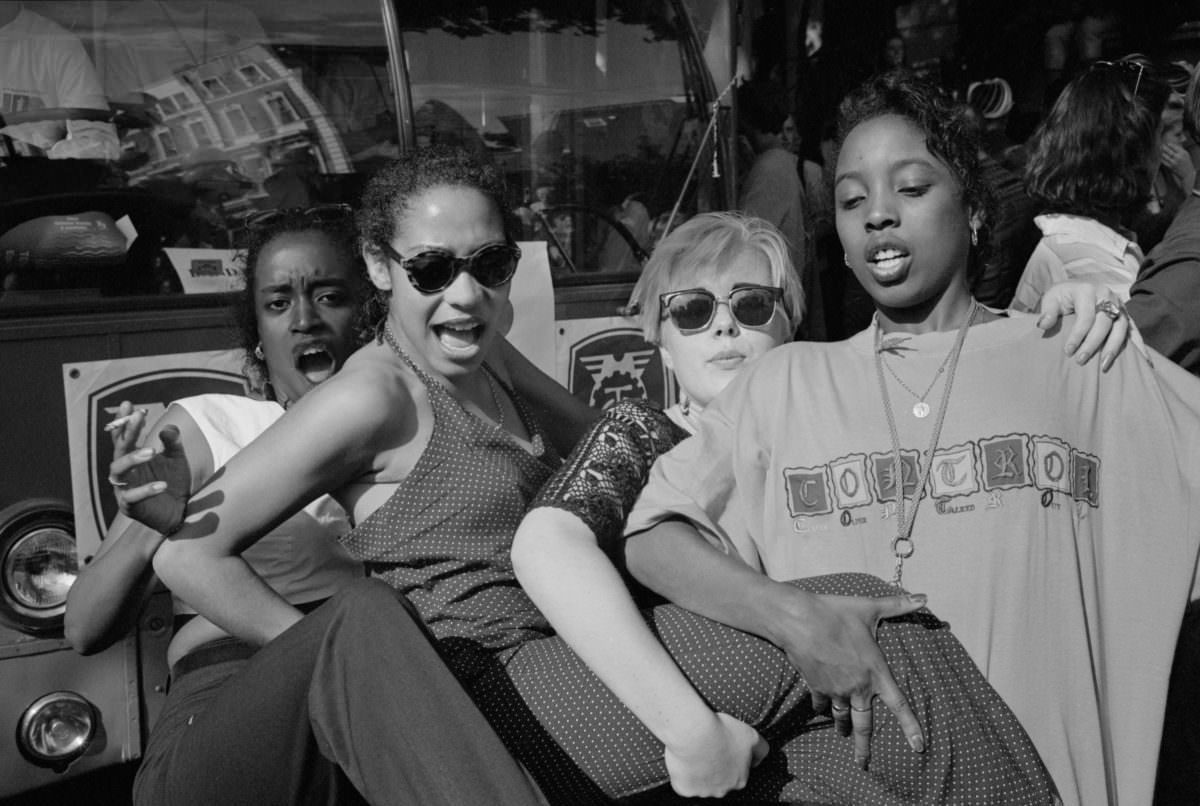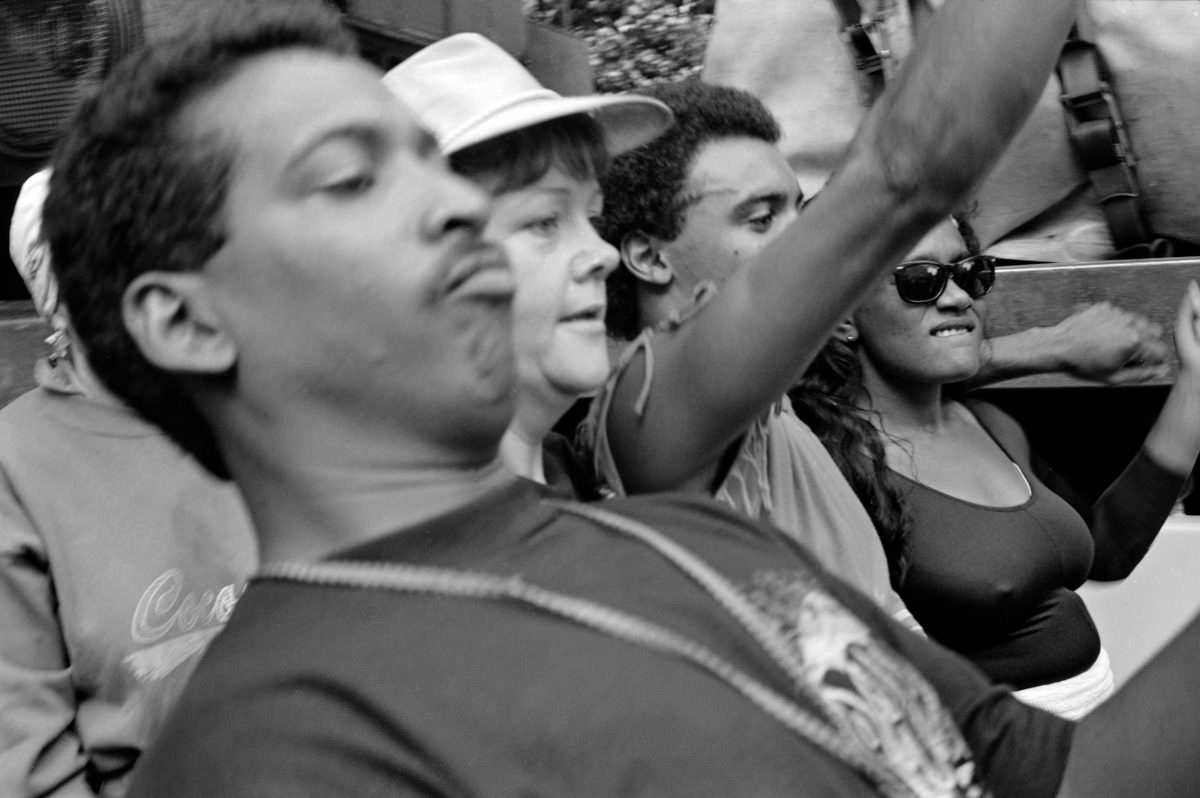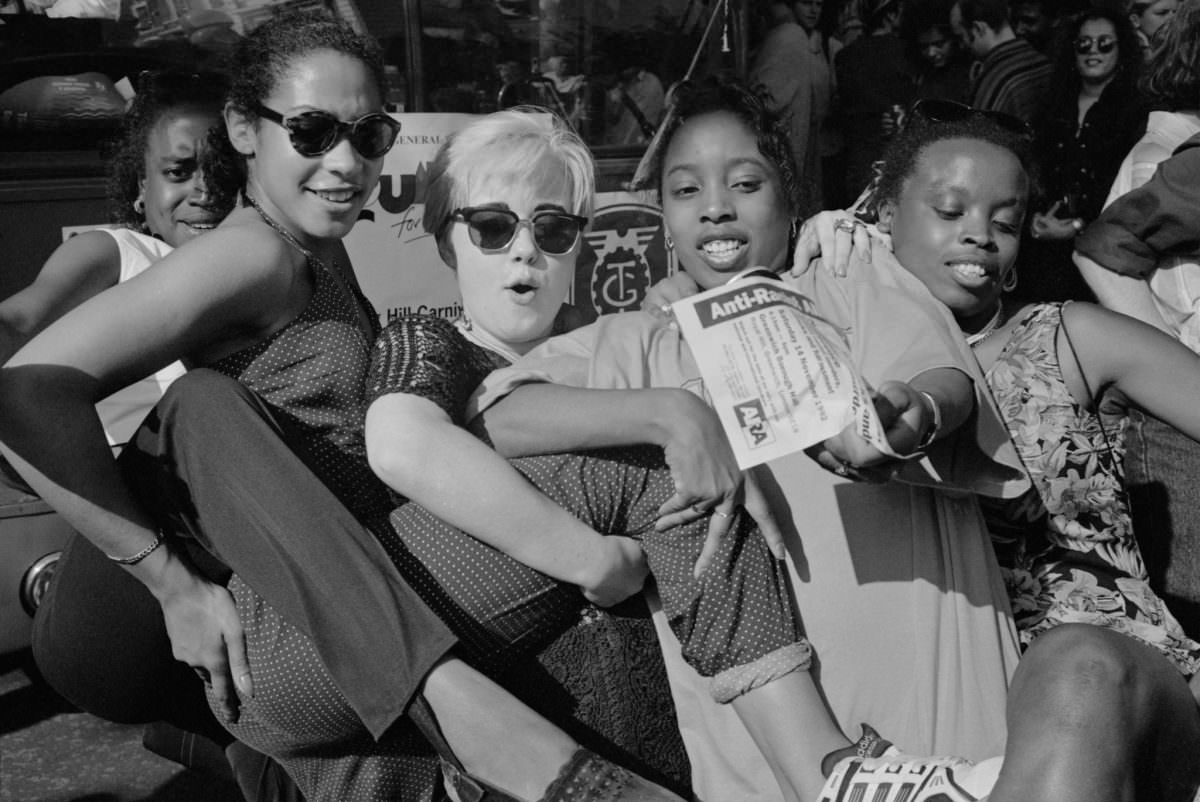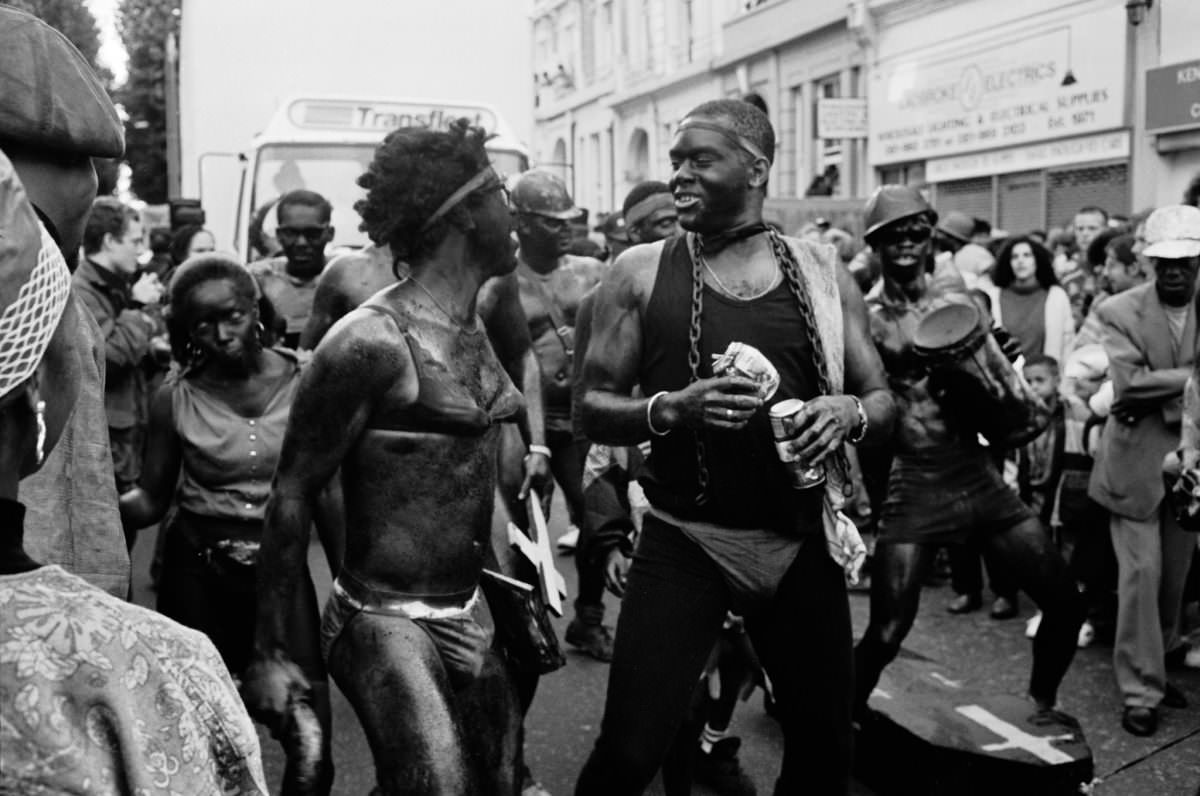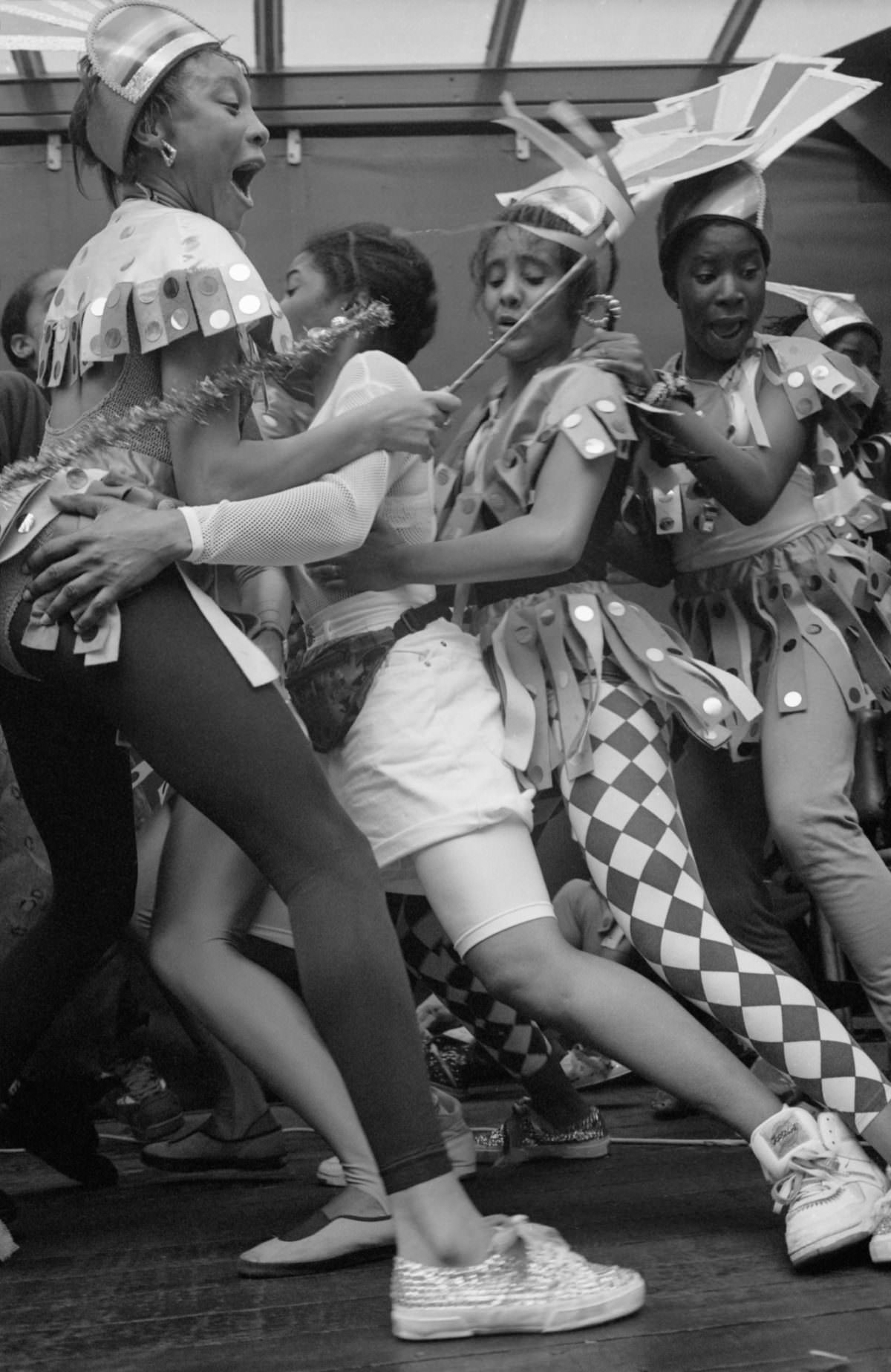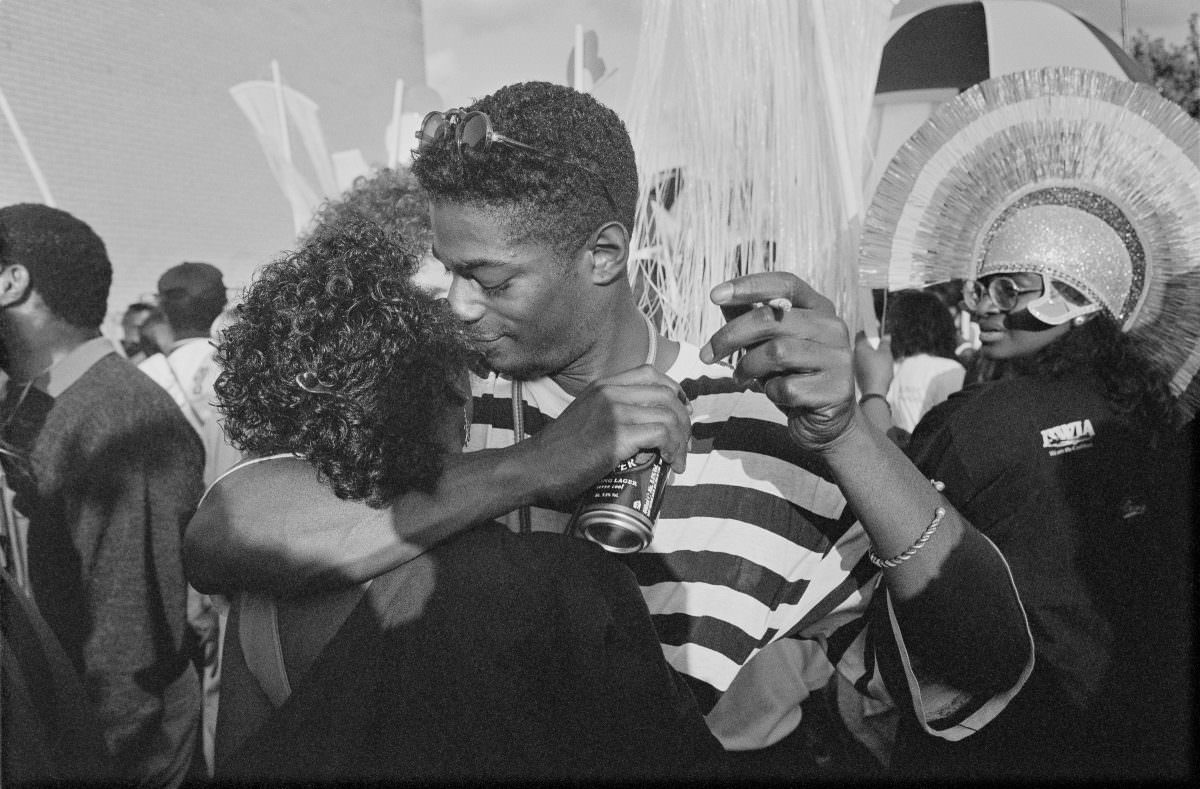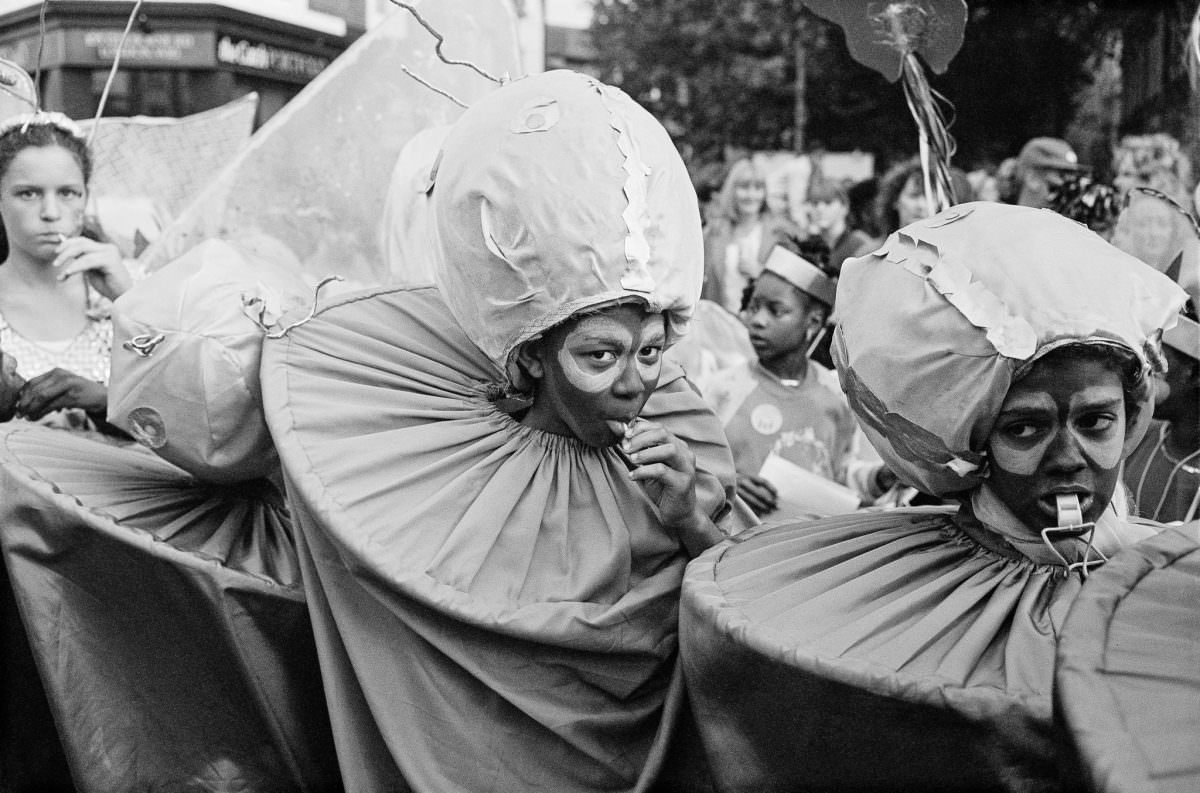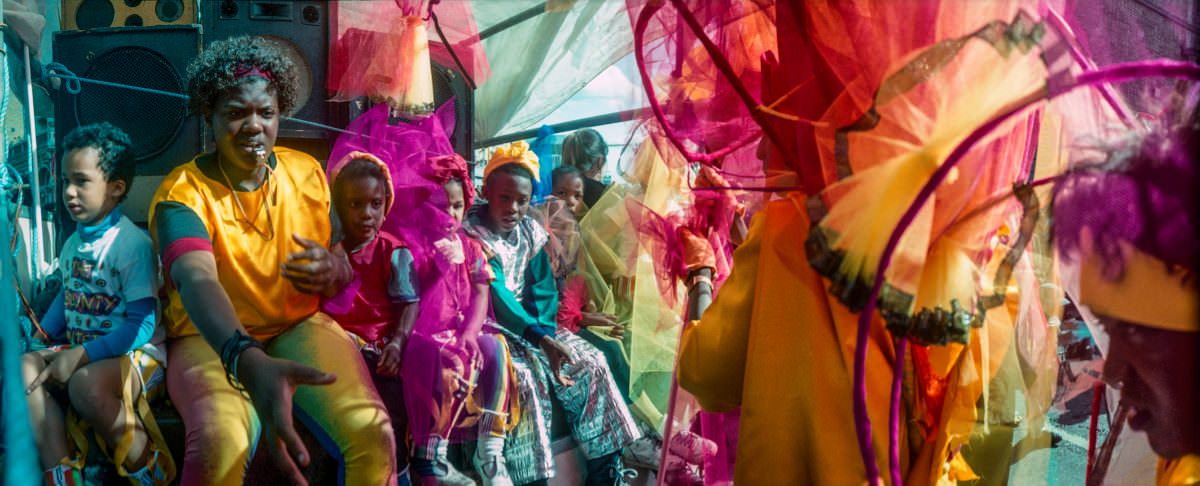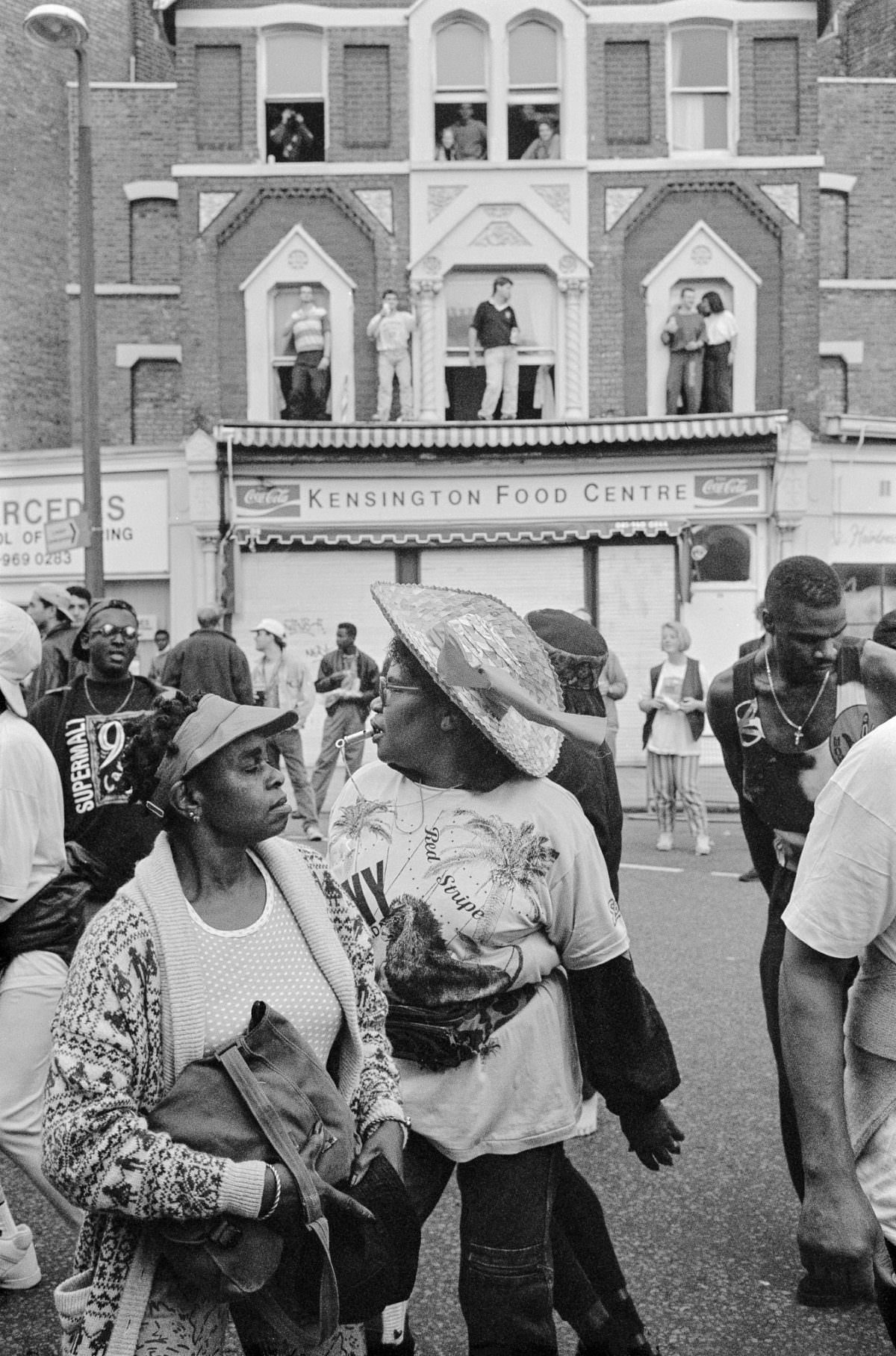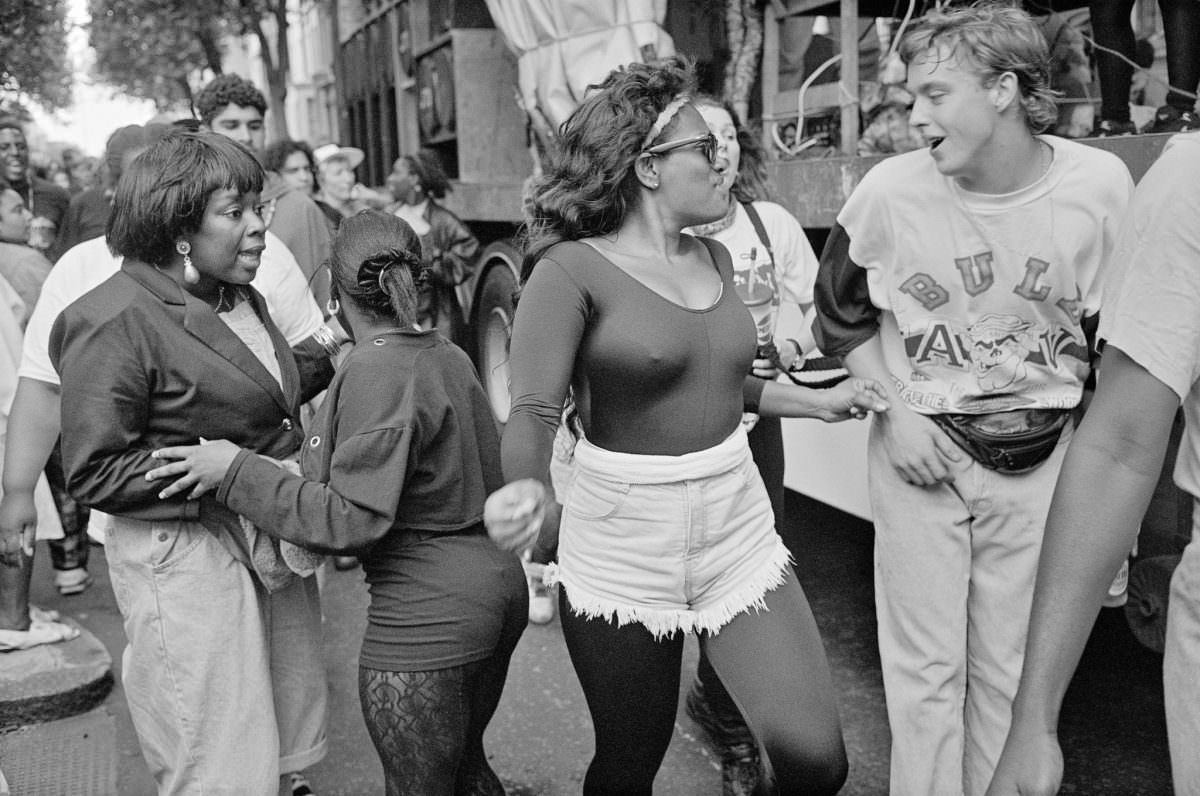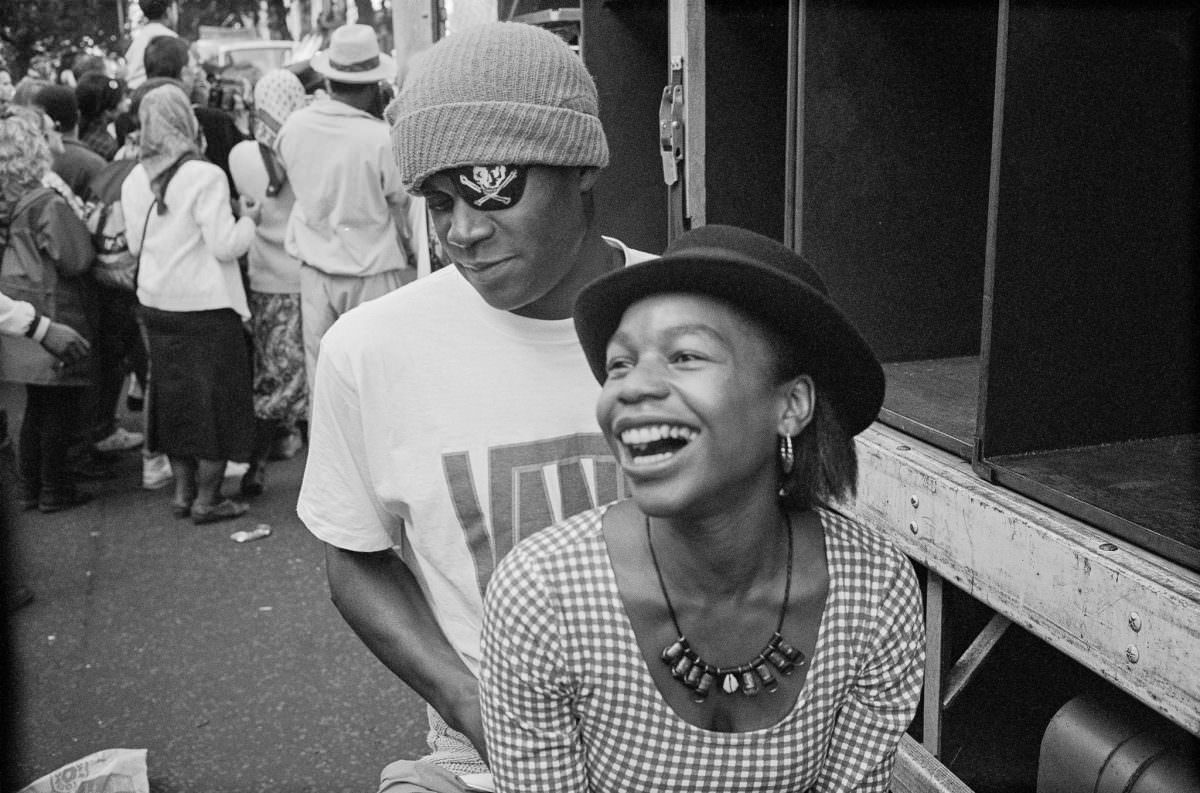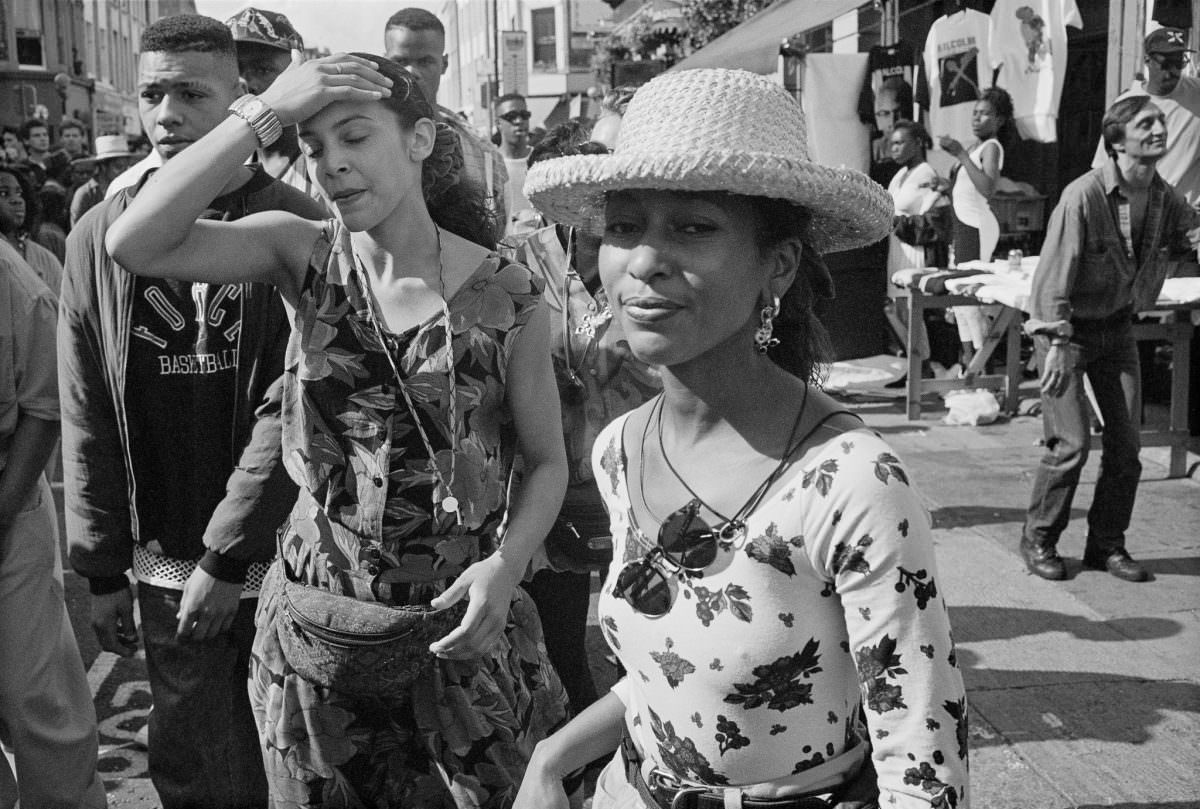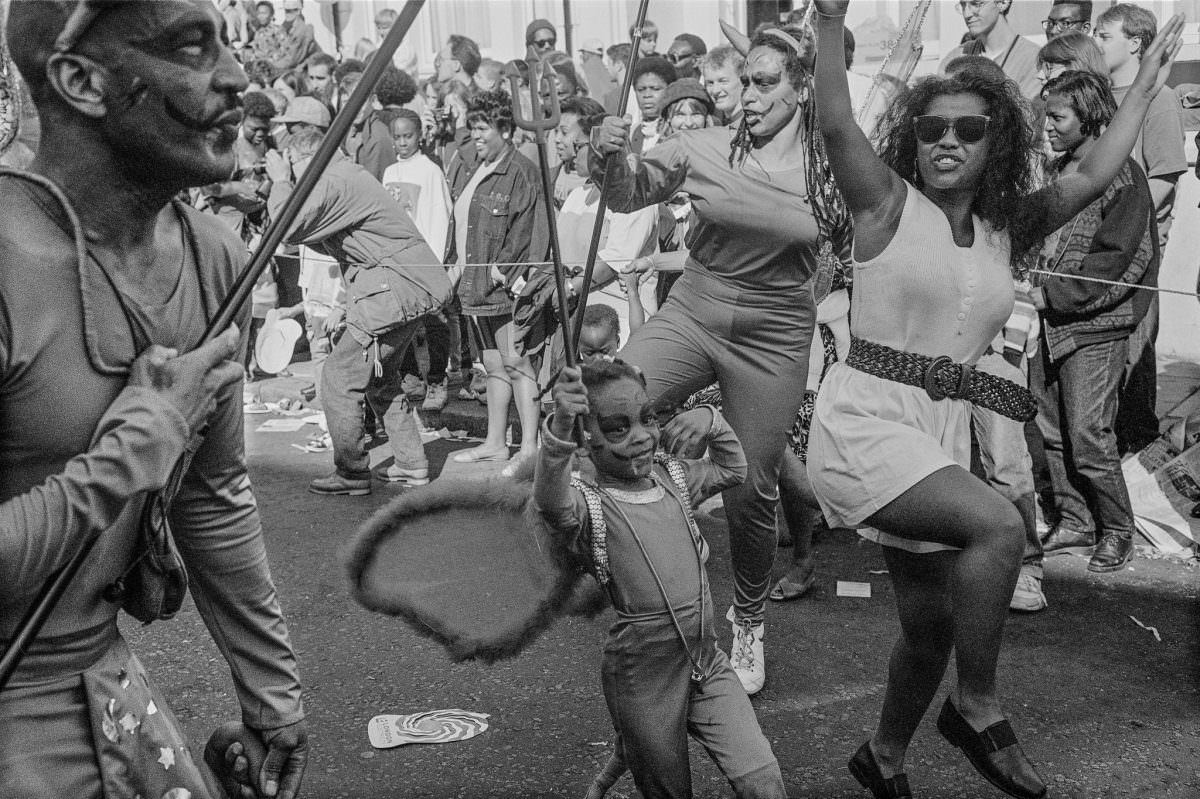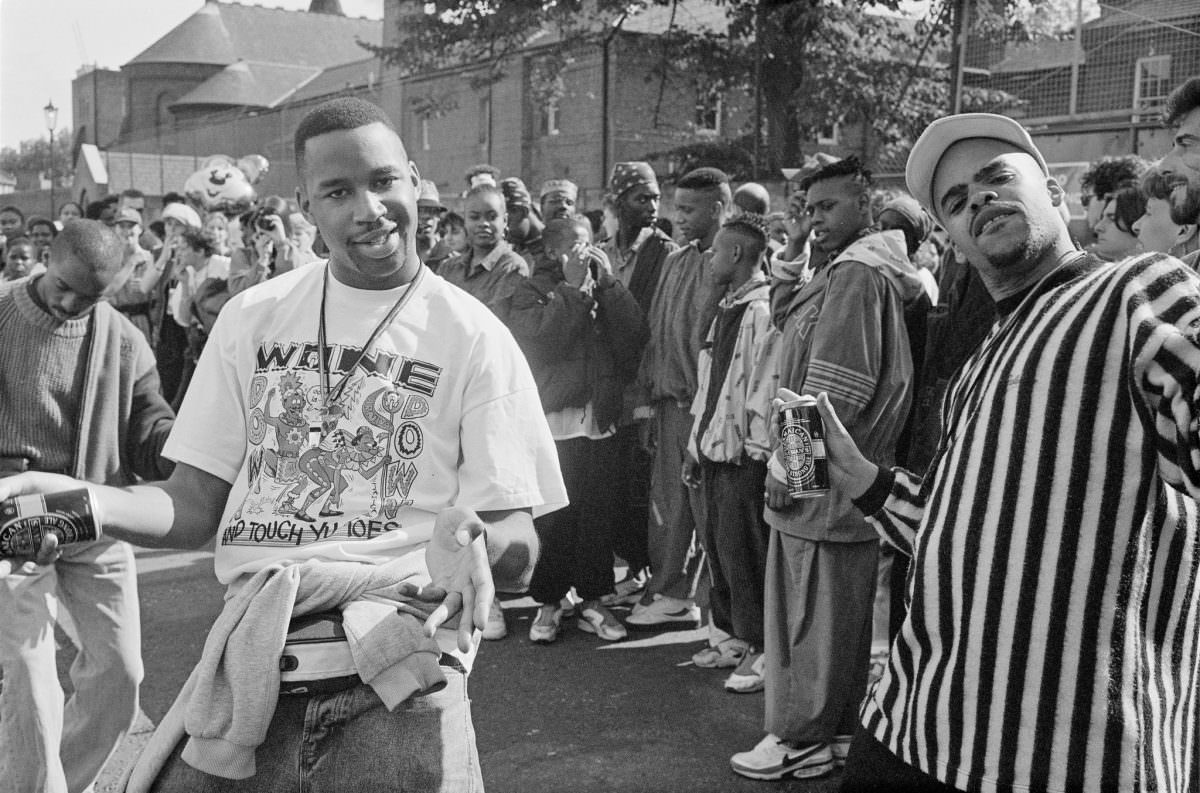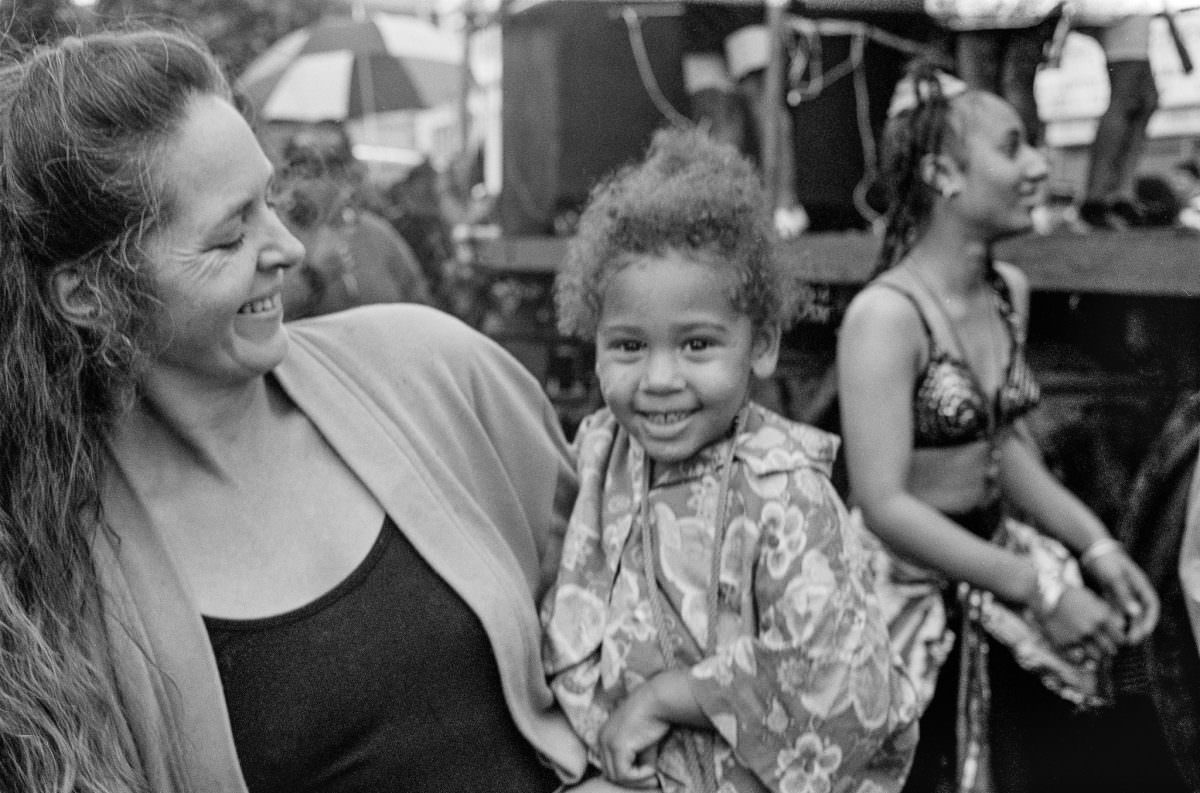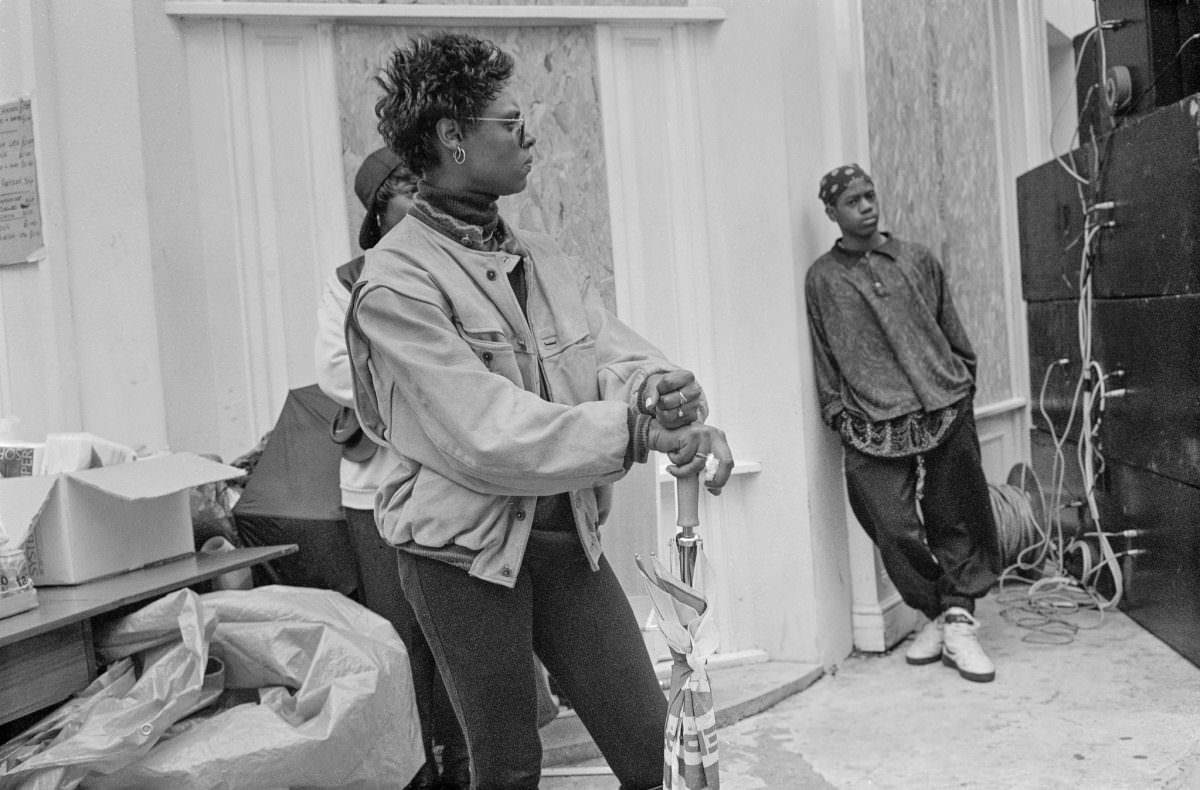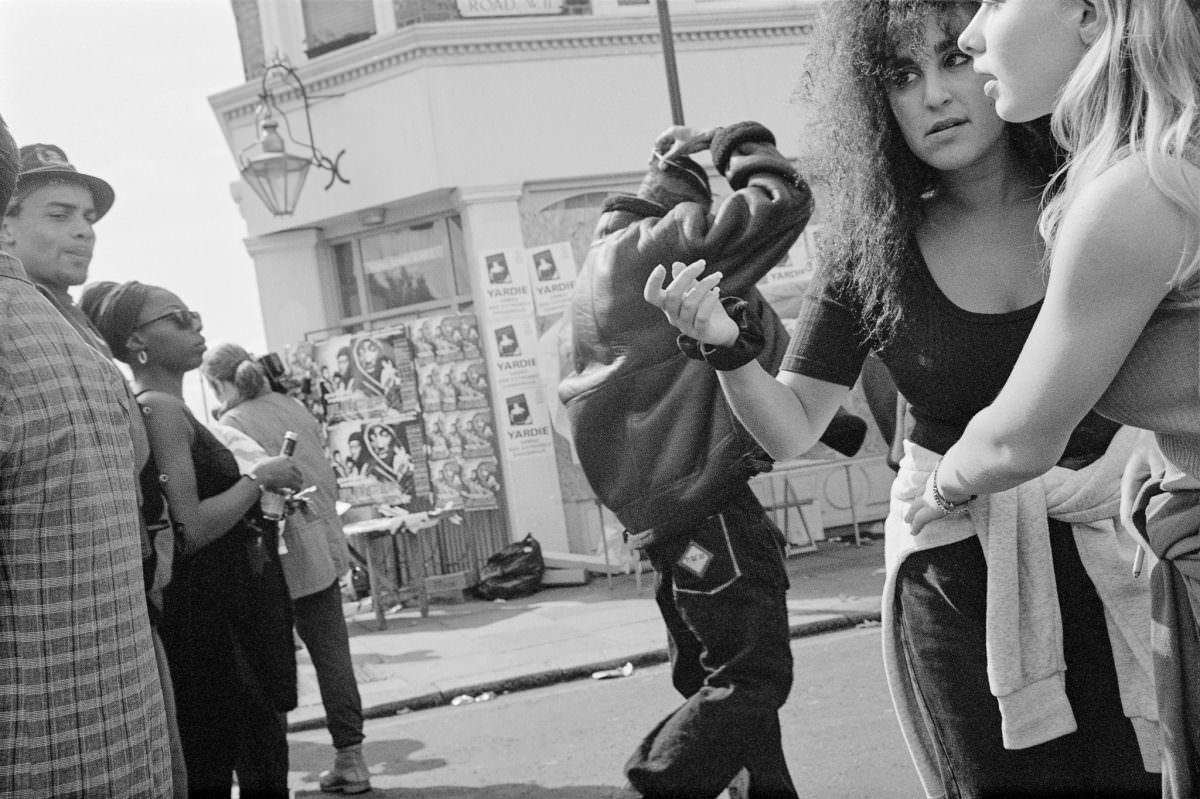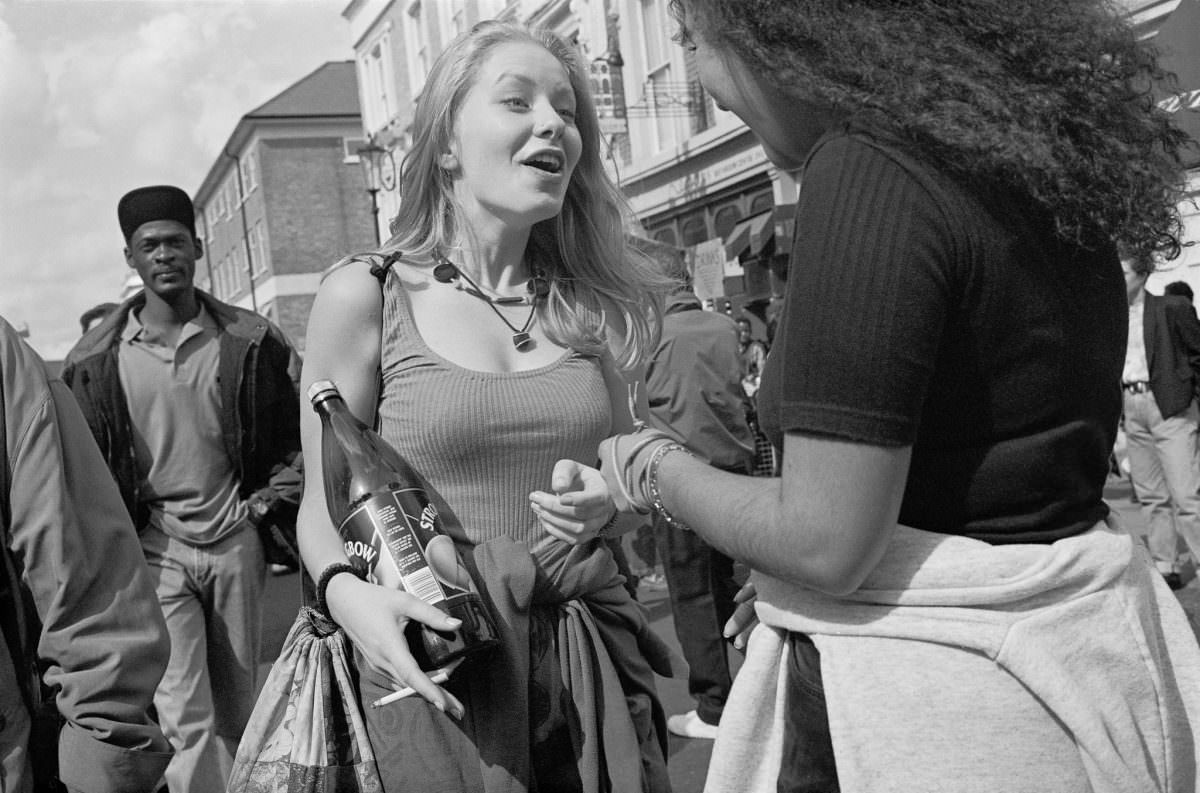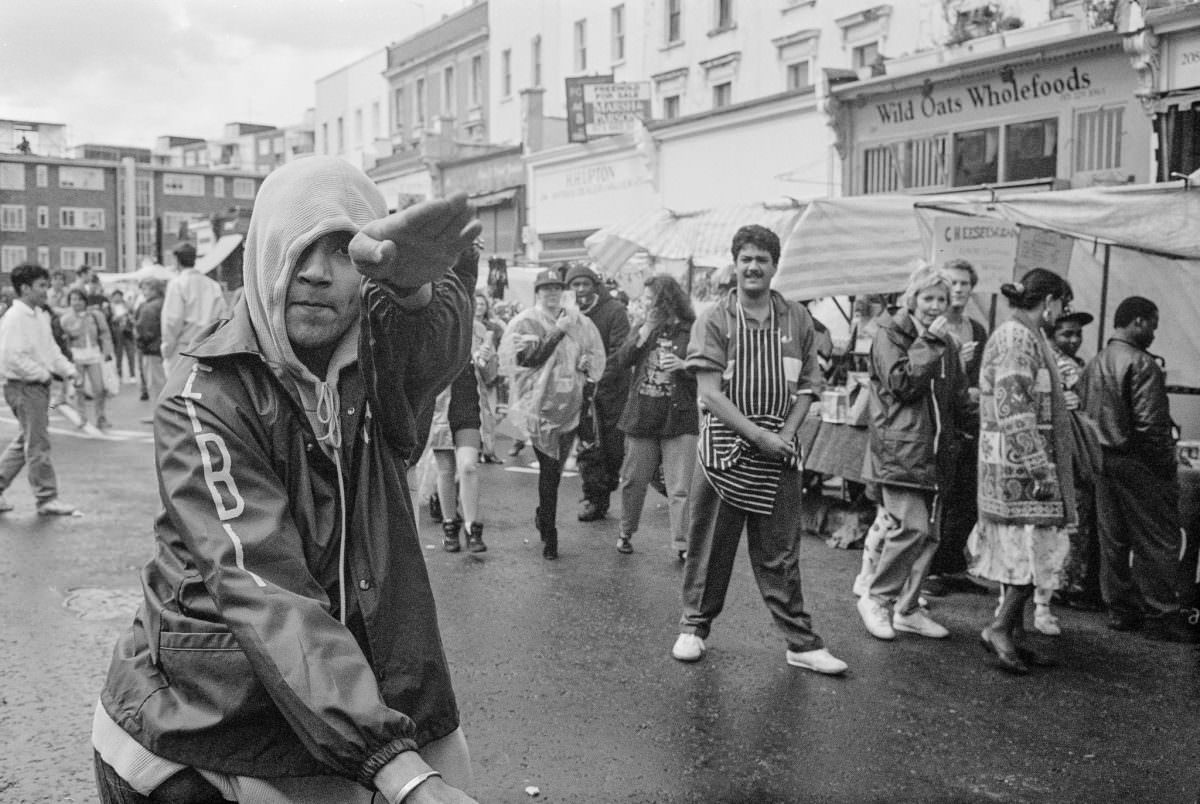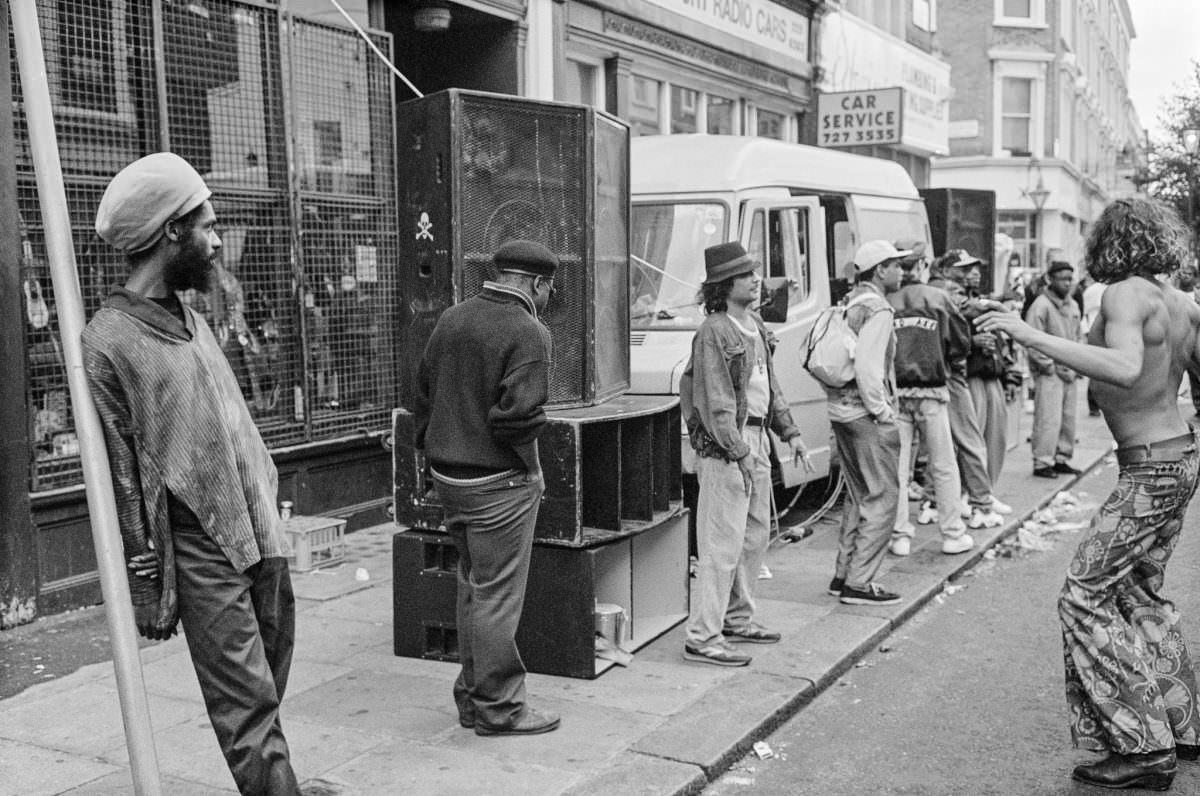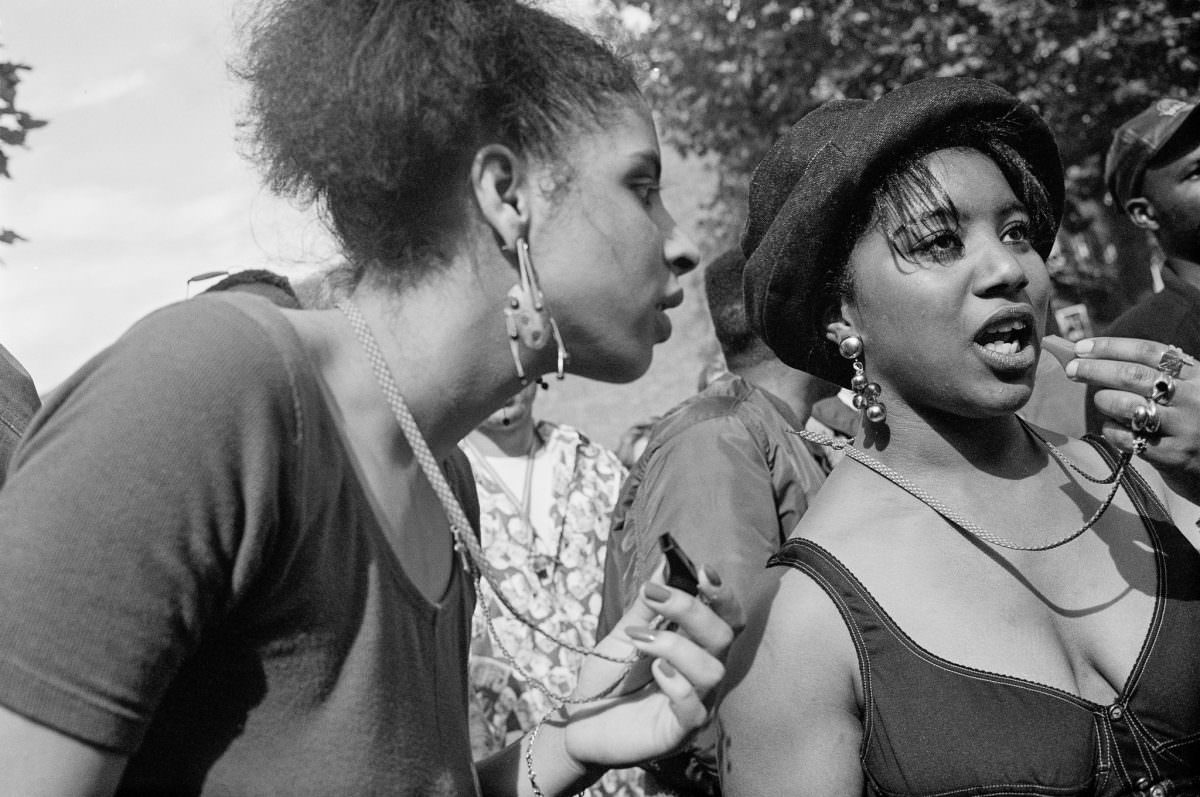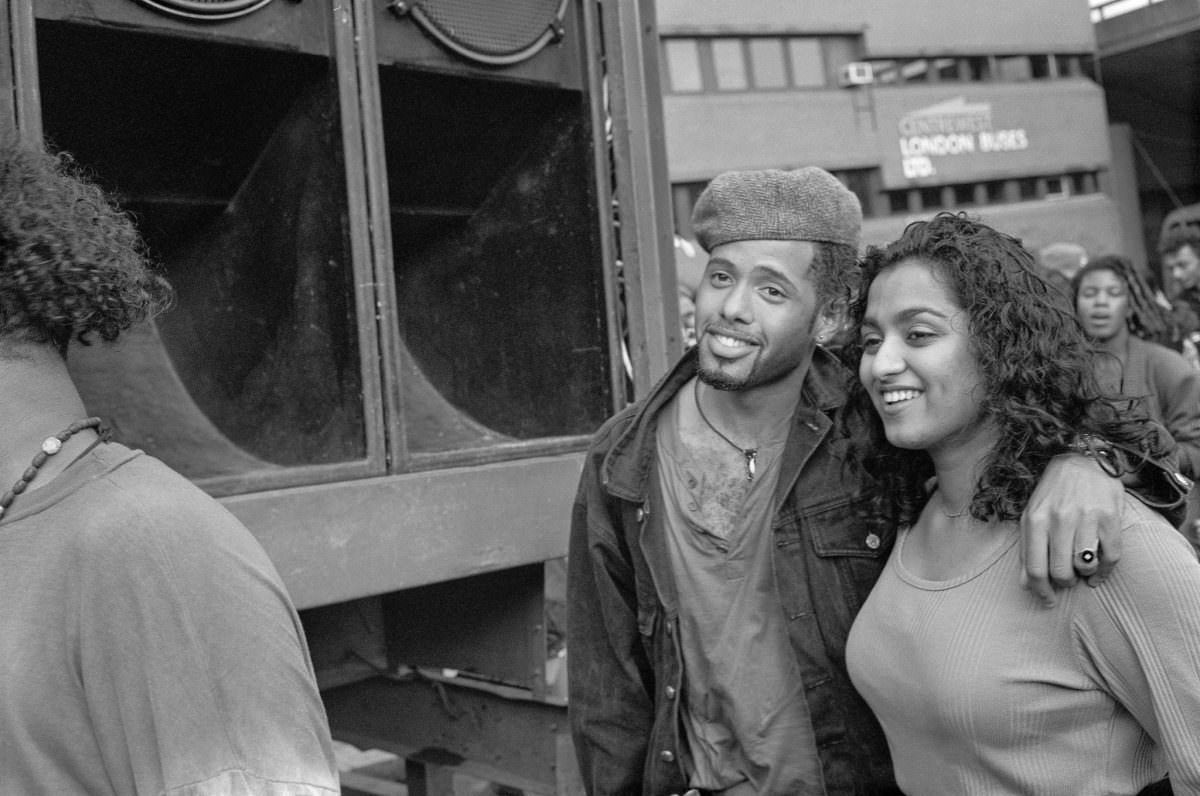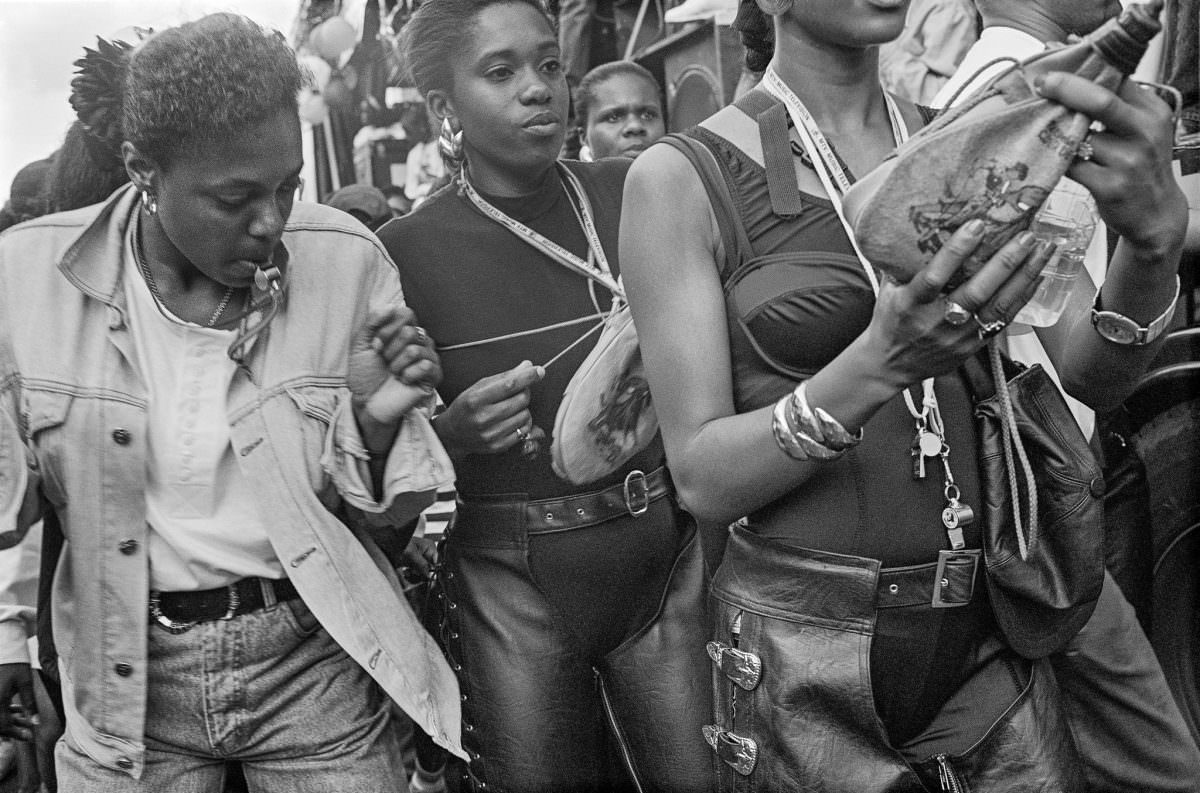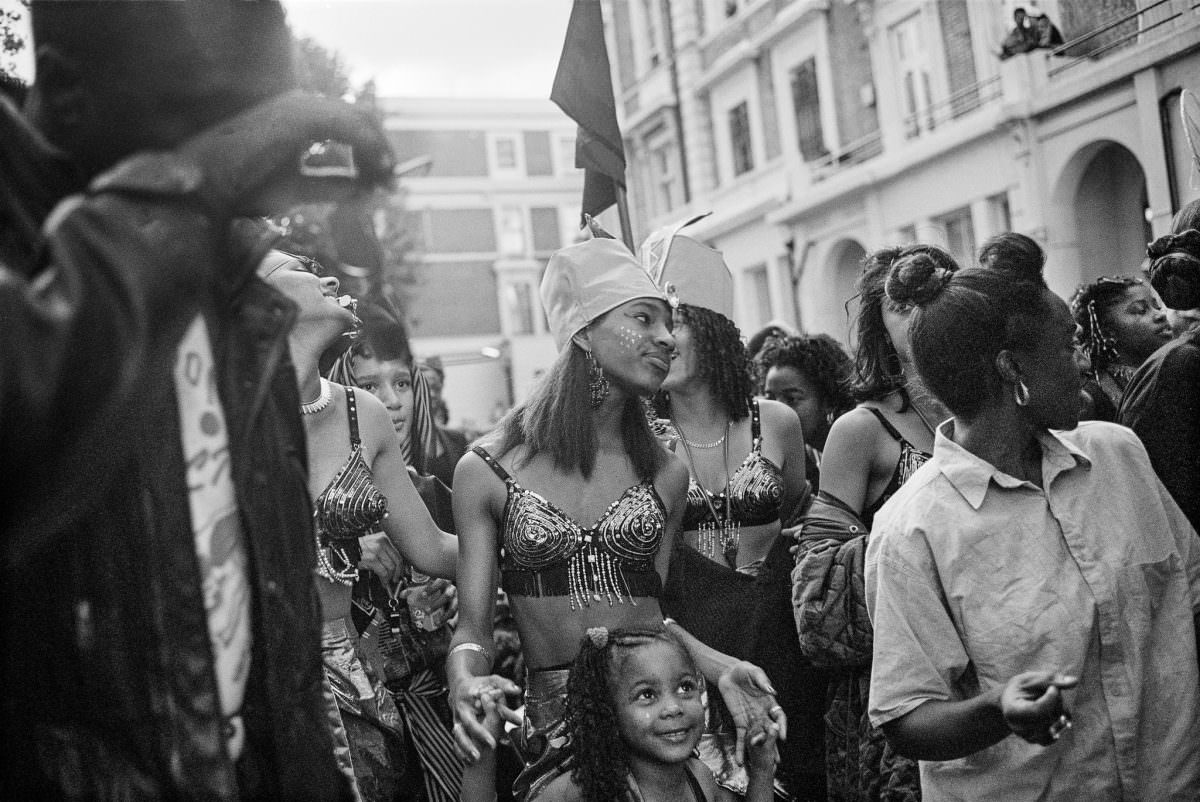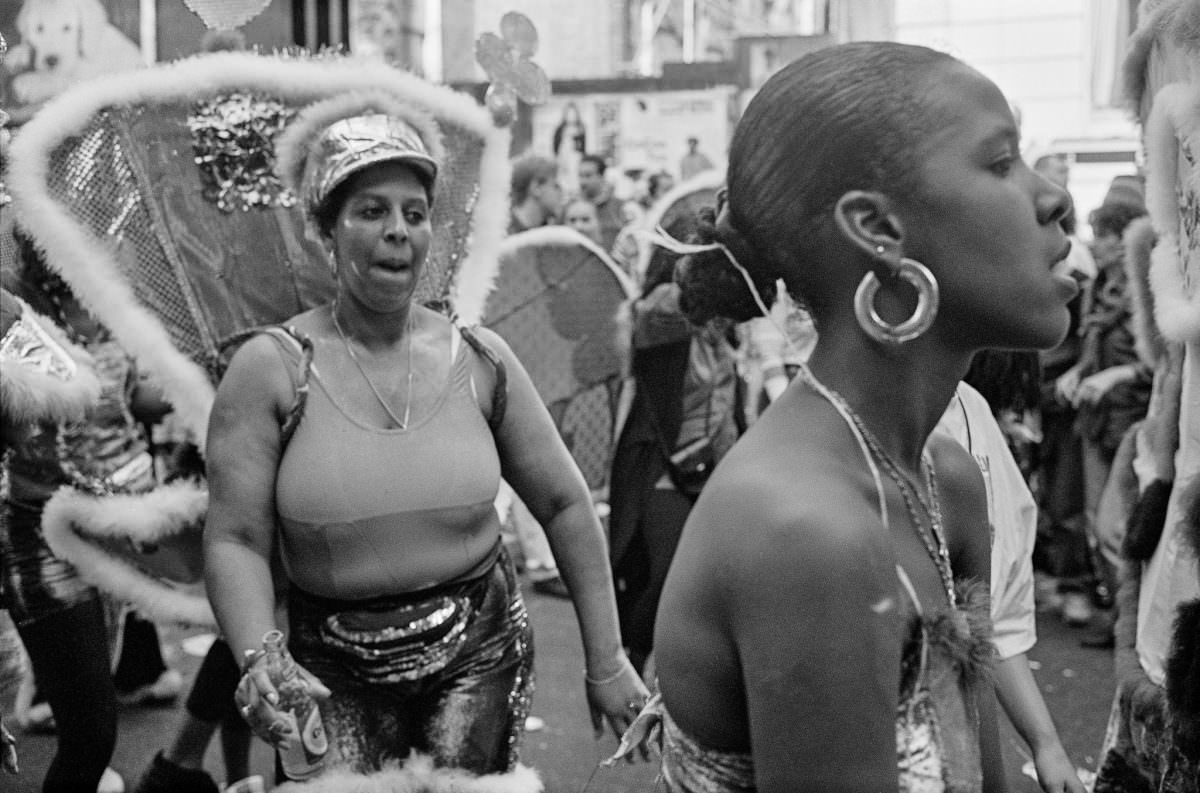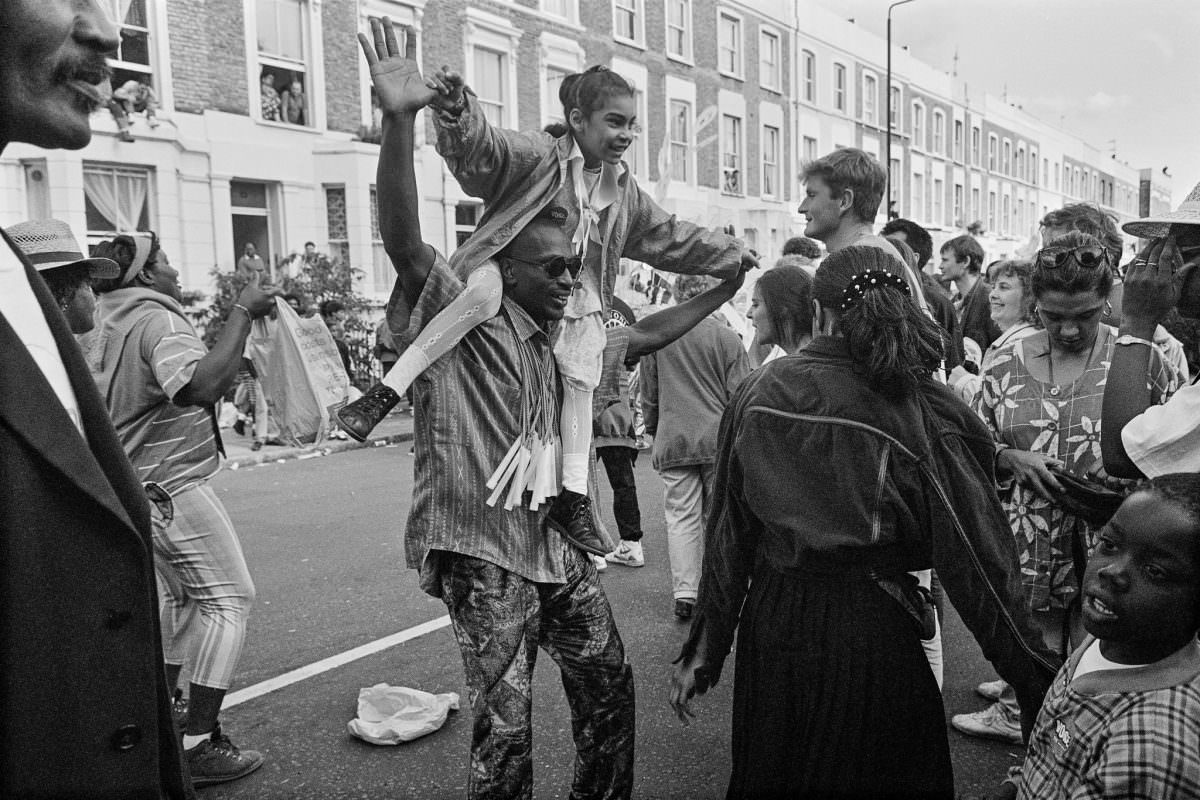The streets of Notting Hill came alive with vibrant colors, pulsating rhythms, and the irresistible aroma of Caribbean cuisine as the 1992 Notting Hill Carnival unfolded. It was a spectacle of music, dance, and cultural pride, a testament to the Caribbean community’s spirit and resilience in London.
The Notting Hill Carnival had grown from humble beginnings in the 1960s to become a massive event, drawing in crowds from all corners of the city and beyond. The 1992 edition was particularly special, marking a significant milestone in the carnival’s history.
Steel bands, a cornerstone of Caribbean music, filled the air with their infectious melodies. The rhythmic clanging of metal drums, each carefully tuned to create a unique soundscape, resonated through the streets. Masquerade bands, adorned in elaborate costumes bursting with color and creativity, paraded through the throngs of people. Each band told a story, drawing inspiration from Caribbean folklore, historical events, or even contemporary issues.
The vibrant costumes, often adorned with feathers, sequins, and beads, were a sight to behold. They showcased the incredible artistry and craftsmanship of the Caribbean community. But the carnival was more than just a visual feast. The pulsating rhythms of calypso, soca, and reggae music kept the energy levels high. Dancers, their bodies moving with the music’s infectious energy, filled the streets.
The aroma of jerk chicken, curry goat, and other Caribbean delicacies wafted through the air, tempting passersby with their mouthwatering scents. Food stalls lined the streets, offering a taste of the islands. From spicy to savory, the diverse flavors of the Caribbean were on full display.


